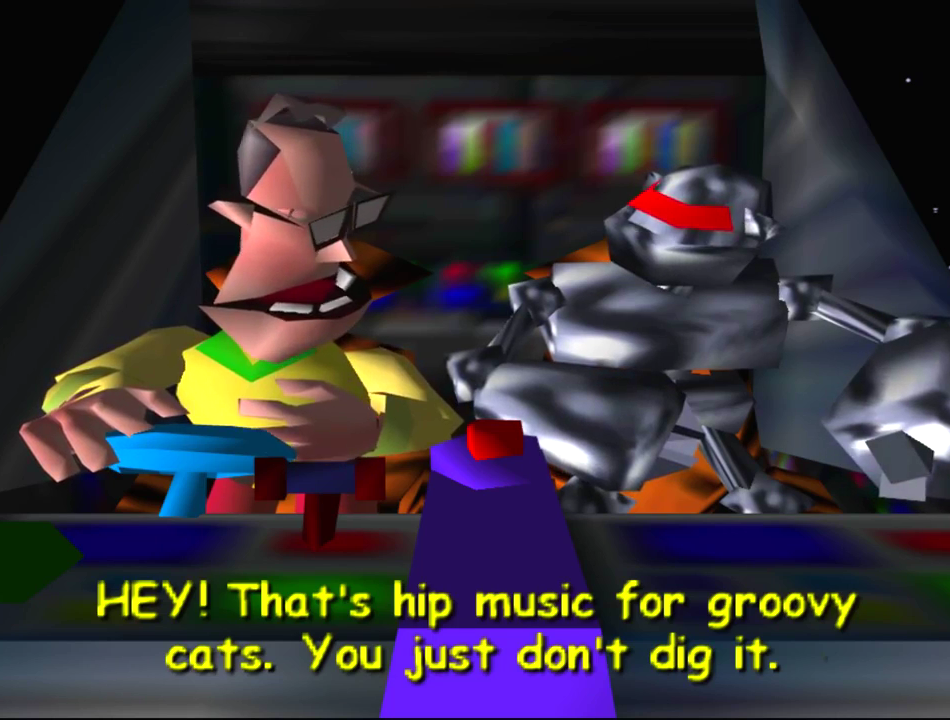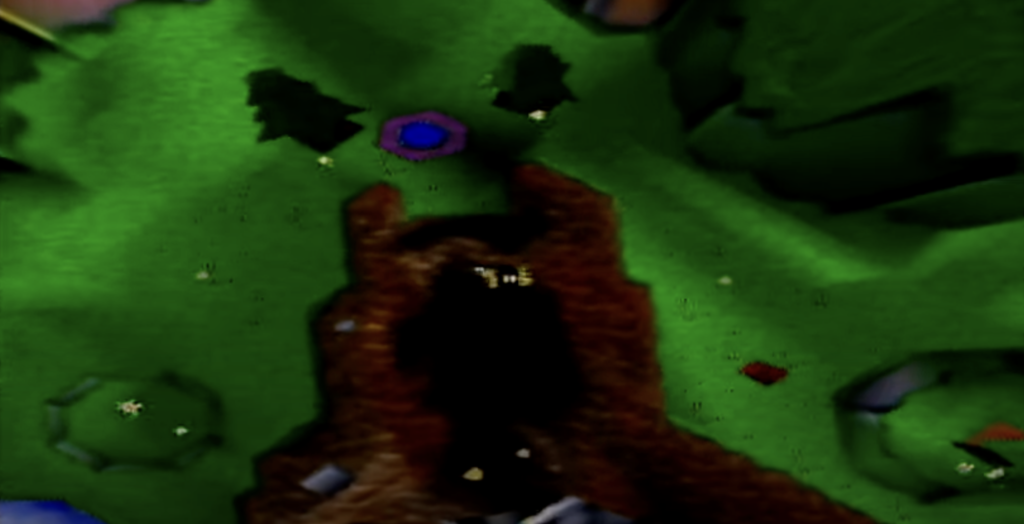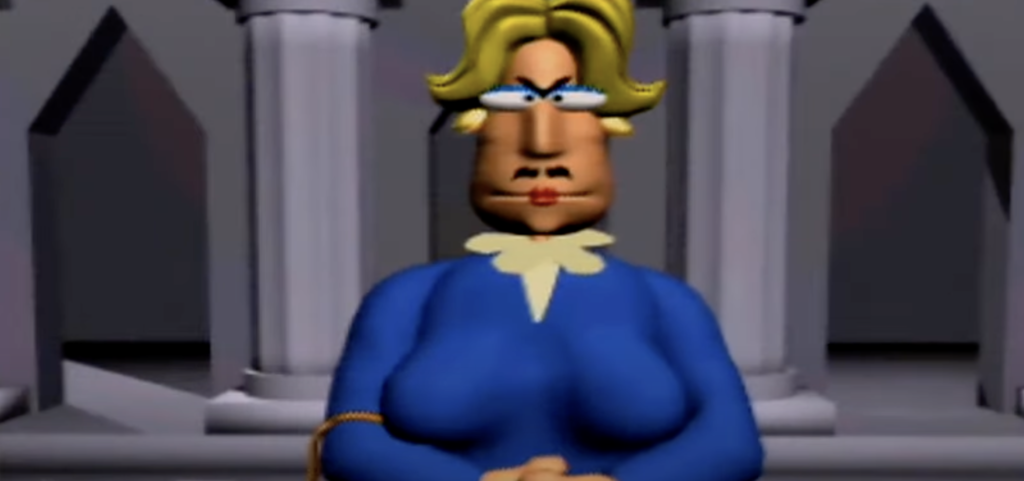Space Station Silicon Valley (SSSV) is a platform game that was originally released for Nintendo 64 by DMA Design (known as Rockstar now) in 1998. As a lesser-known title, SSSV was often overlook and overshadowed by DMA’s own Grand Theft Auto, which was just released a year prior in 1997. However, SSSV is a game that combine elements of multiple genres and has a distinctive art style as well as unique mechanics.

SSSV tells the story of the investigation into a space station that soon disappeared after its launch and magically reappeared a thousand year later. Dan Danger and Evo, who is a robot, were sent to the space station to investigate its disappearance as well as the other missing teams that were sent to investigate prior. The player controls the microchip inside Evo, which has the ability to control the evolved animals that have been merged with the station’s technology and became electricized. The player goes through individual room in the space station and complete objectives through manipulating different animals.

One of the main reasons why SSSV is so fun is its unique mechanic. Each animal has two distinct abilities and attributes. There are almost 50 different kinds of animals that players can control in the game, that alone produces 100 abilities with different mechanics. For example, the penguin can jump and hover using a parachute and use snowball attack to inflict damage on enemies. A parrot in the game gains the ability to fly and use dive bomb as damage method. Players can also be a racing tortoise who can use its shell to attack and has an increased speed moving in water. Each animal is so meticulously designed not only that they have different damage output, but also its original biological attributes can be taken into considerations and making it more realistic.
Primarily as a platform game, players move across rooms in five different zones: Europe, Ice, Jungle, Desert, and New York Harbor. However, it incorporates elements of multiple genres in terms of the mechanics and gameplay and thereby enriching the players’ experience. For example, at the end of the level, the player needs to control a kangaroo to box-fight another kangaroo, or as a parrot who needs to navigate the sky in a precise manner to gather resources. Apart from that, the game often presents the players with puzzles that require outside-the-box thinking. For example, in one level, the player needs to organize a herd of four sheep into their fences. To do that, the players need to understand how the mechanics of different animals work and choose the appropriate one to carry out the task. In this case, the player needs to control a dog to chase the sheep into the fences. This kind of interactive puzzle is frequently presented in the game that requires players’ attention and problem-solving skills. Therefore, SSSV has elements of a simulation game as the players play through different animals, a fighting game where players need to engage in close-quarter combat, a flying game as it requires players’ precise control, and a puzzle game as players need to solve tasks that involves information synthesis and adaptive thinking.
Unlike GMA’s original GTA that presents players with a top-down pseudo three-dimensional view, SSSV fully utilized the faster processing hardware of the Nintendo 64 system and presents players with a full three-dimensional world that can be traversed through. The 3D environment also enables mode of storytelling that wasn’t possible before. When we see Evo and Dan crash into the space station during the opening sequence, we see the ship moving vertically downward, creating a realistic sense of depth. Soon afterwards, Evo was blown out of the ship due to the crash, and we see the camera closely following the chip that fell out of his body as it rapidly drops down to the ground. While the animation style is no sense near realistic, both due to technical and artistic reasons, the sense of motion this sequence achieves through 3D rendering is so real that I experienced a little vertigo when I first played it.

In addition, the 3D nature of the game also allows for more detailed character design. The figures in the game are quite weird looking to say the least. The president of Earth blends both genders, wearing a red lipstick while growing a “Hitler beard.” For animals it gets even weirder. Players can control a racing dog with wheels that launches missiles, or a tortoise tank that literally looks like a tank with a shell on top, or a camel with a large cannon on its back. The juxtaposition of biology and technology along with a parody-like artistic style, there is an inherent absurdity to the design of the game. At the end of the game, Dan told Evo not told wait for a big finale because he sold it to pay for a new ship. Just as how it blends biology and technology, it also blends the game world with the real world and produces a new hybrid reality.

Space Station Silicon Valley is unconventional and non-sensical in a lot of ways, but it is also what sets it apart from other platform games of the period. Through hundreds of different character mechanics and head-scratching puzzles, SSSV promises hours and hours of gameplay that always feels fresh and fun.
